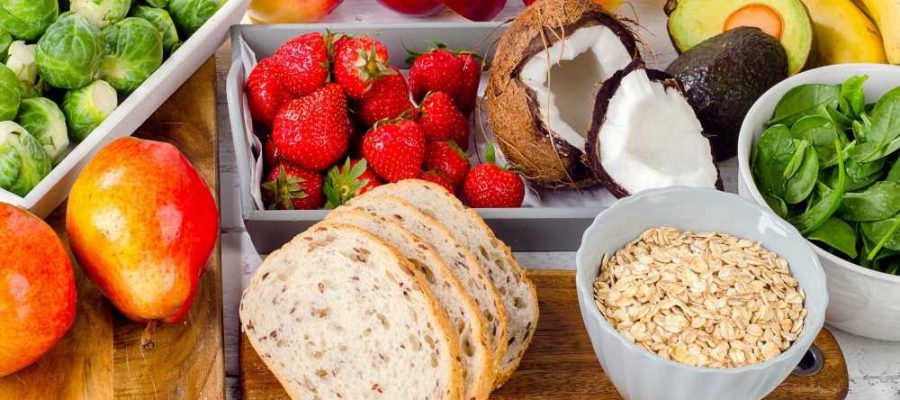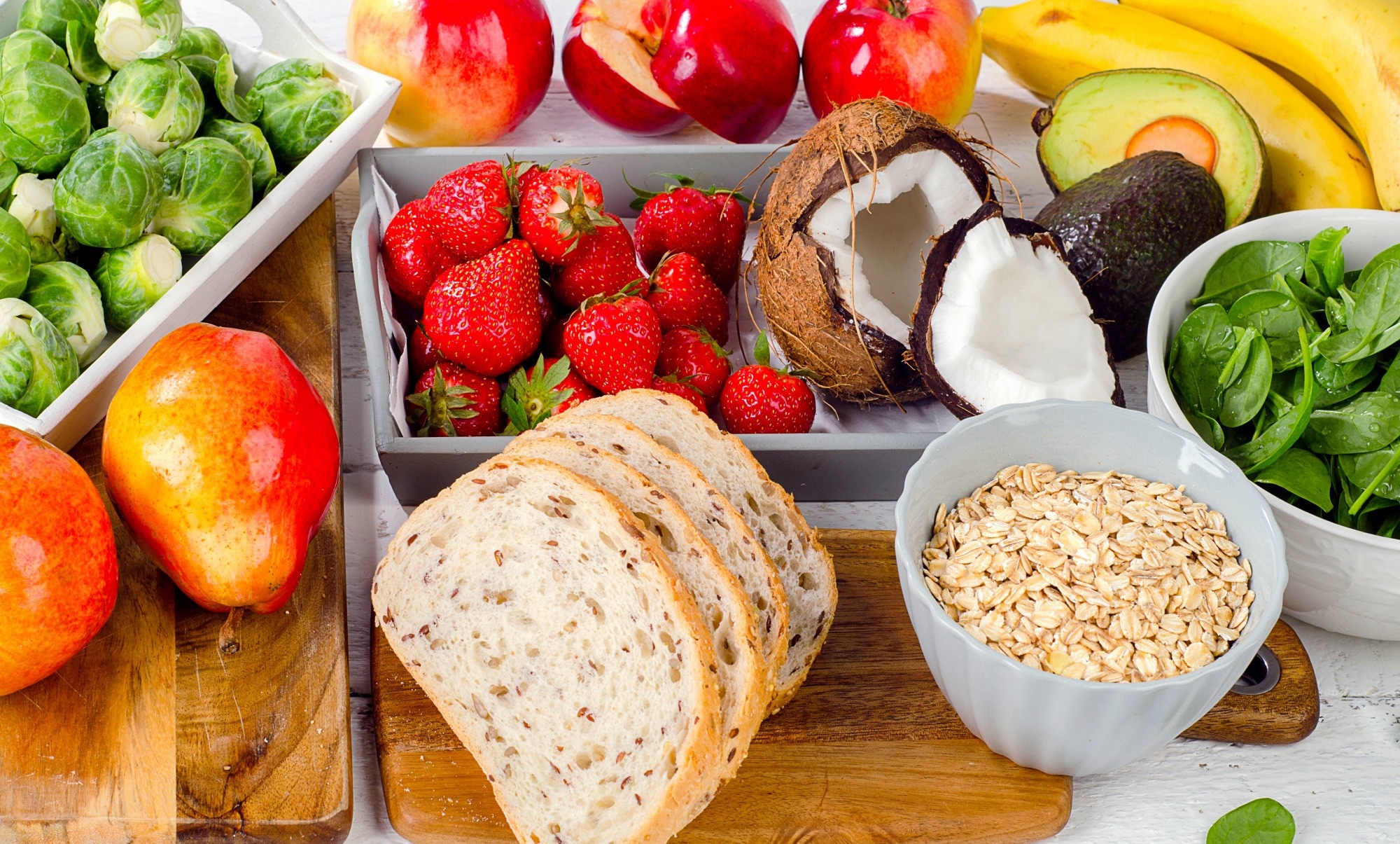
High-fiber diets may help control the adverse effects of antibiotic treatments on beneficial gut microbiota
In a recent study published in the Nature Communications Journal, researchers explored the role of diet in controlling the structure and function of the gut via chemical environment modulation.
To test this, they investigated the effects of host diet supplements, especially fiber, in altering the harmful impacts of antibiotic-induced gut dysbiosis (AID).
 Study: Fiber supplementation protects from antibiotic-induced gut microbiome dysbiosis by modulating gut redox potential. Image Credit: TatjanaBaibakova/Shutterstock.com
Study: Fiber supplementation protects from antibiotic-induced gut microbiome dysbiosis by modulating gut redox potential. Image Credit: TatjanaBaibakova/Shutterstock.com
Background
The study used in vivo murine models and next-generation sequencing approaches to elucidate their observations' chemical and mechanical underpinnings.
Their results revealed that dietary fiber could modulate gut bacterial metabolism, safeguarding against AID via a redox-driven mechanism.
Additionally, fiber helped conserve a majority of beneficial gut bacteria and hasten their recovery after the antibiotic course compared to other dietary regimes and probiotic supplements.
AID and diet
Since the discovery of penicillin in 1928, antibiotics have played a crucial role in treating microbial diseases. However, given their mode of action, antibiotics often cause collateral damage to the beneficial gut microbiome, resulting in adverse conditions, including antibiotic-induced gut dysbiosis (AID).
Dysbiosis is a common and sometimes severe ailment, resulting in inflammatory bowel disease, infection, aberrant immune function, and metabolic disorders.
Research has explored the effects of probiotic supplements and oral drug adsorbers to counteract AID. Still, these approaches may increase gut disequilibrium (for probiotics) or reduce antibiotic efficacy, prompting the need for alternative AID therapies.
Studies have found that diet can have a significant effect on predictable biochemical reactions occurring in the gut. The specific carbon source in food can influence which electron acceptors reach the gut microbiota.
Western diets, traditionally rich in sugar, are rapidly absorbed in hosts' digestive tracts. This results in limited carbon reaching the gut, which microbes are forced to compete for, altering their mode of action to target carbon in the intestine's mucosal lining damaging the gut.
Recent work has suggested that modifying metabolism may protect gut microbiota from antibiotic stress. In vivo, murine models have shown that repressing microbial metabolism reduces antibiotic susceptibility.
Studies focusing on the role of diet on AID have found that dietary fibers, including Xanthan gum, can reduce antibiotic impacts on gut microbiome richness post-antibiotic treatment.
Conversely, Western diets rich in sugars and fat have been shown to exacerbate AID. However, the mechanisms underlying the associations between diet and AID remain hypothetical and vague.
About the study
The present study uses next-generation metagenomic and metatranscriptomic sequencing to investigate gut microbiota composition and function in high resolution.
Researchers then combined this data with sensitive chemical measurements of the gut environment to elucidate the enrichment of observed metabolic pathways.
Four-week-old C57BL/6 mice (female, all with AID) were divided into case and control cohorts. The controls were fed a modified diet utilizing glucose as the exclusive carbon source. In contrast, the cases were fed a diet devoid of glucose but rich in seven dietary fibers (inulin, pectin, dextrin, levan, arabinoxylan, beta-glucan, and cellulose).
Glucose is a rapidly absorbed monosaccharide expected to induce carbon stress on the gut microbiome. At the same time, the fiber cocktail is slow digesting, expected to reach and be bacterially processed in the gut.
Both cohorts were fed their respective diets for a week before being administered a course of the antibiotic amoxicillin.
Longitudinal 16S rRNA sequencing of murine feces was used to identify the optimal time of fiber supplementation on recovery post-antibiotic treatment.
Metatranscriptomic and metagenomic sequencing of cecal contents on days one and five post-treatment was employed to broaden the gut microbiota's taxonomic and functional resolution. Metatranscriptomic sequencing was additionally used to determine alterations in metabolic functions in the gut.
The HMP Unified Metabolic Analysis Network (HUMAnN3.0) database and the MaAsLin2 R package were used to investigate diet-associated changes in biochemical processes along the bioenergetic scale, disentangling metabolism, and bioenergetics.
Linear discriminant analyses were used to identify pathway-level metabolic signatures. Researchers finally measured the chemical redox potential in murine cecal contents to elucidate the physiological manifestation of observed metatranscriptomic and metagenomic alterations.
Study findings
The present study found that a high-fiber diet conveys protection against antibiotics and, subsequently, AID before, during, and post-antibiotic treatment. At all stages, a high-fiber diet resulted in lower microbiome diversity loss and improved recovery post-treatment.
"These observations imply that fine modification to diet can affect microbiome recovery post-antibiotic treatment. From a translational perspective it is particularly beneficial that supplementation at the time of antibiotic administration is as effective as prior to treatment."
Metatransciptomic and metagenomic sequencing revealed that fiber directly reduces AID symptoms, while a glucose-rich diet exacerbates the condition. Intestinal histopathology and bacterial load were consistent in the case-cohort on day five post-antibiotic treatment, elucidating the protective effects of fiber.
In contrast, control mice fed on the glucose diet depicted significant reductions in their alpha diversity on both day one and, to a more considerable extent, day five of treatment. The glucose diet was further observed to shift gut microbial species composition, increasing Proteobacterial load. Previous work has found associations between Proteobacteria and AID, implying the worsening of the condition.
Metatranscriptomic evidence showed that high-fiber diets resulted in gut microbiomes shifting their metabolic pathways to those assigned to fatty-acid metabolism, dormancy, and carbon fixation. In contrast, high-glucose diets moved pathways to those involved with respiratory metabolism.
"In general, active metabolism is associated with increased susceptibility while metabolic dormancy confers protection. This further adds to the data displaying that glucose supplementation promotes an aerobic inflammatory GI environment."
Biochemical process analyses revealed that fiber in diet may increase fermentative metabolism and buffer the redox potential of the gut. In contrast, the glucose diet depicted an upregulation in the transcription of pathways involving nitrate and oxygen as terminal electron acceptors.
These results imply that fiber can promote protective fermentative metabolism by reducing gut redox potential, thereby protecting against damaging respiratory metabolism associated with antibiotic treatment.
Conclusions
In the present study, researchers used murine AID models fed on high-glucose and high-fiber diets to investigate the effect of modifiable diets on AID post-antibiotic treatment. These results were merged with metatranscriptomic and metagenomic sequencing to elucidate the functional and histopathological changes these diets confer on gut microbial assemblies.
This study reveals that high-fiber diets can conserve gut microbiota richness and change their biochemical pathway associations to those favoring fermentation and dormancy, conferring protection against the adverse effects of AID post-antibiotic treatment.
In contrast, glucose-rich diets were found to reduce microbiome alpha diversity and shift biochemical pathways to those favoring oxidative respiration, damaging the gut lining and exacerbating AID.
"This work makes important strides in linking changes in diet-induced redox potential and resulting microbial activity to differential antibiotic susceptibility. The next important steps are to establish causation between changes in redox potential and antibiotic susceptibility in the context of the host. Future studies can target investigation towards the effects of diet directly on host cell metabolism as it relates to microbiome changes and determine if the observed differences translate to male mice."
Penumutchu, S. et al. (2023) "Fiber supplementation protects from antibiotic-induced gut microbiome dysbiosis by modulating gut redox potential", Nature Communications, 14(1). doi: 10.1038/s41467-023-40553-x. https://www.nature.com/articles/s41467-023-40553-x
Posted in: Medical Science News | Medical Research News | Medical Condition News
Tags: Amoxicillin, Antibiotic, Bacteria, Cell, Cell Metabolism, Diet, Dysbiosis, Efficacy, Electron, Fermentation, Food, Glucose, Histopathology, in vivo, Inflammatory Bowel Disease, Metabolic Disorders, Metabolism, Microbiome, Oxygen, Penicillin, Probiotic, Probiotics, Research, Respiratory, Stress, Supplements, Transcription

Written by
Hugo Francisco de Souza
Hugo Francisco de Souza is a scientific writer based in Bangalore, Karnataka, India. His academic passions lie in biogeography, evolutionary biology, and herpetology. He is currently pursuing his Ph.D. from the Centre for Ecological Sciences, Indian Institute of Science, where he studies the origins, dispersal, and speciation of wetland-associated snakes. Hugo has received, amongst others, the DST-INSPIRE fellowship for his doctoral research and the Gold Medal from Pondicherry University for academic excellence during his Masters. His research has been published in high-impact peer-reviewed journals, including PLOS Neglected Tropical Diseases and Systematic Biology. When not working or writing, Hugo can be found consuming copious amounts of anime and manga, composing and making music with his bass guitar, shredding trails on his MTB, playing video games (he prefers the term ‘gaming’), or tinkering with all things tech.